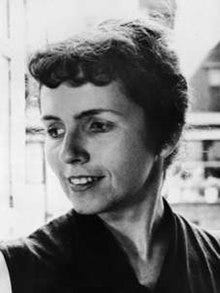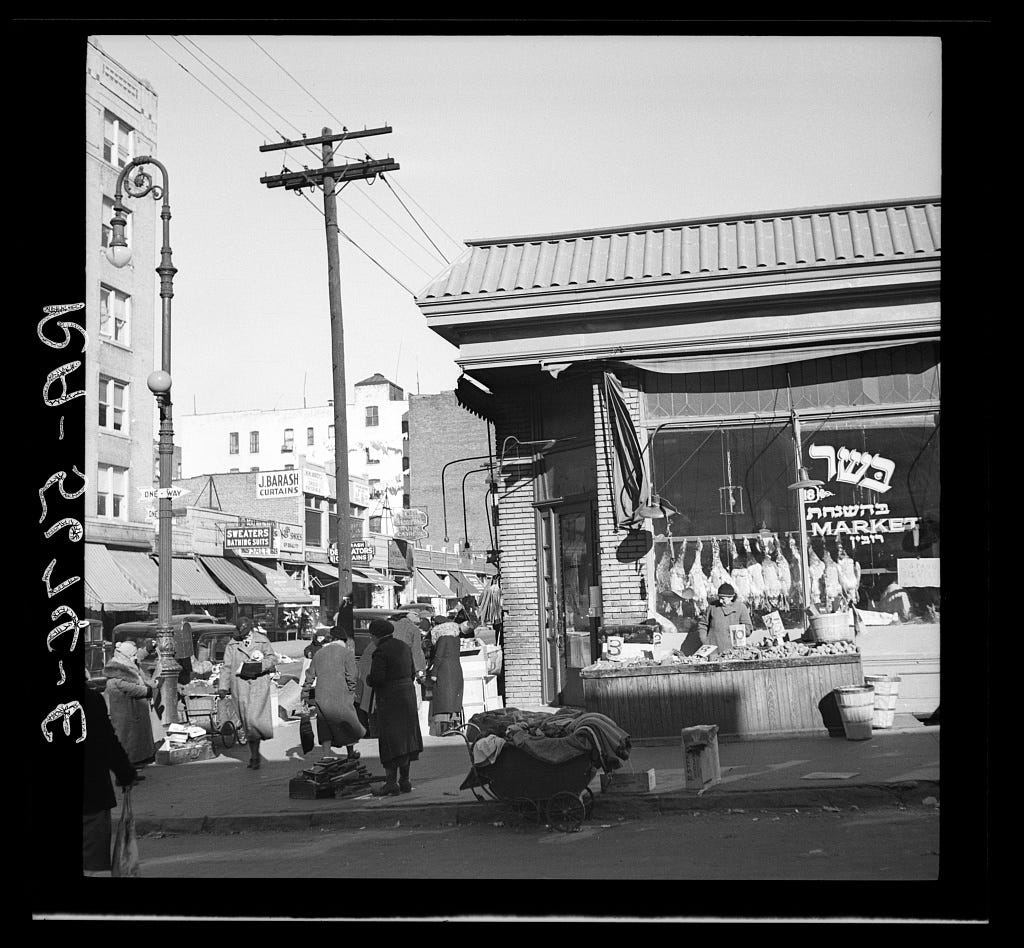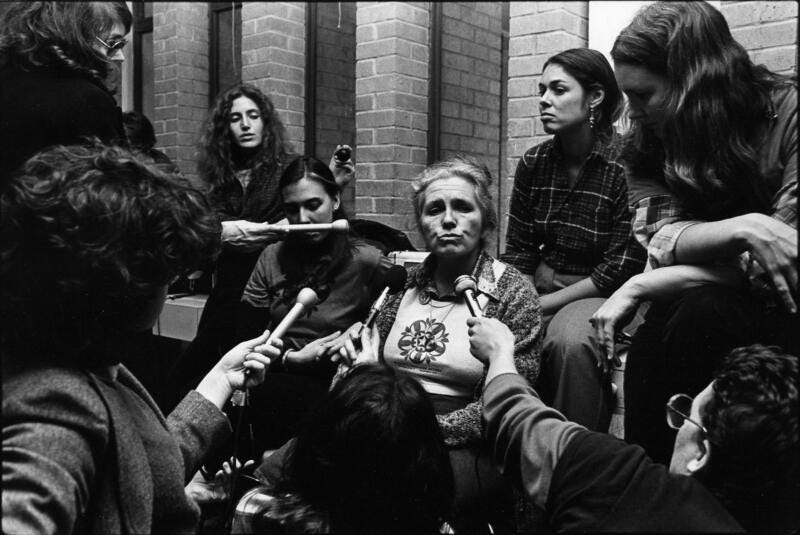Welcome to A Narrative of Their Own, where I discuss the work of 20th century women writers and their relevance to contemporary culture.
If you enjoy reading essays on literature as well as monthly reviews of great books and recommended reading, please consider a free or paid subscription.
I have mentioned Grace Paley before in my newsletter, both from the point of view of discussing her short stories, her life as a mother/writer, and her stories written about her alter ego, Faith Darwin, as she navigates young motherhood and later, middle age. I also discussed her impact on my own writing practice in both this podcast with Dr Kathleen Waller of The Matterhorn and in my interview last year with Matthew Long for Beyond the Bookshelf.
But for a while now I’ve wanted to write a biography of the writer who influenced me so much when I was starting out trying to get my writing published, because I believe her life and her writing are so inspiring to other writers out there, particularly parents of young children who struggle to find the time to write.
Grace Paley was born Grace Goodside in 1922 to Russian-American immigrants who had arrived in New York at the beginning of the twentieth century. Raised in the Bronx, her upbringing and geography would go on to heavily influence her writing.
At home, her parents spoke both Russian and Yiddish, meaning Grace grew up sandwiched between two cultures. Her Russian-Jewish roots, together with the street life of New York, fed richly into her writing, which hums with the dialects of mid-twentieth century life. What her short stories lack in the form of plot, they more they make up for in character; rich in conversation and with a fine ear for Jewish, Black, Irish and other dialects being represented. Their lack of an established narrative structure (some of the stories appear to have no real beginning or end) led her work to being considered Postmodern.
“A whole small country of damaged, fragile, haunted citizens”.
Michael Wood, New York Review of Books
Like many writers of her era, her beginnings were humble, as was her education. Dropping out of high school at the age of sixteen, Paley attended Hunter College for a year, before marrying film cameraman Jess Paley at the age of nineteen, in 1942. Jess and Grace had two children together, although later divorced.
During her marriage, between 1942 and 1944, Jess served in the US army, meaning Grace lived in the army camps amongst many other women. She later claimed that it was at this time that she first became conscious that the ordinary lives of women were of great importance, however had been largely ignored in formal literature. She was writing poetry at the time and continued to do so after the end of the war, when she gave birth to her two children, Nora in 1949 and Daniel in 1951.
One of the key plot lines throughout her stories is that of young mothers and their relationships with each other and with the men in their lives.
Paley’s first published collection The Little Disturbances of Man (1959) was received to much critical acclaim. Although sales were modest, the book attracted many devotees to Paley’s style of writing, with critics claiming her writing as “fresh and vigorous” (The New Yorker) and “her view of life is her own,” (Kirkus Reviews). Ten stories fill the pages of this first collection, which focuses on the inhabitants of a busy New York neighbourhood. Paley herself summed up the characters which populate the collection as:
“Dumbwaiters boom, doors slam, dishes crash; every window is a mother's mouth bidding the street shut up, go skate somewhere else, come home."
These characters are the “ordinary” people on the street who are dealing with the everyday “little disturbances” of life.
“We have had a great many artists, more of them women than not, recording the tragedies of repetition, frequency, weariness and little disturbances. What distinguishes Grace Paley from the mass of these is the interest, and even more, the inventiveness which she brings to her small world."
The collection opens with the story ‘An Interest in Life’, in which a woman has just been deserted by her husband, leaving her with their four children:
“My husband gave me a broom one Christmas. This wasn't right. No one can tell me it was meant kindly."
As you can see from the opening lines, though the subject matter could become morose, Paley’s voice allows for a sense of humour and for us to immediately warm to the abandoned wife, interested to hear her story. In fact, the voice of Ginny in this story, as well as many of her other female characters, reminded me of my mother’s large family when I was a child. Conversations such as Paley delivers feel so real to growing up around a boisterous set of relatives, who always had a story or ‘saga’ to share. There is this real sense of pulling up a chair at the kitchen table and of sharing a tragicomic story with people you know well.
Paley also introduces us to an enduring character who was to return throughout her later stories: Faith Darwin. Many critics observed that Faith was Grace’s fictionalised alter ego in the way she took her through her life as a woman in New York. We see Faith raising her sons, being let down in love, befriending the other young mothers in the playground. Later, we come full circle back to Faith as a middle aged woman and mother, unsure of her place or what is happening within her body in ‘The Long-Distance Runner.’ This story has often been cited as sharing similarities with Alan Sillitoes 1959 story ‘The Loneliness of the Long-Distance Runner’, and I have often thought that perhaps it was Paley’s way of showing the female perspective on the ‘angry young men’ era. Both stories show characters attempting to outrun their lives by taking up running, as both an emotional and physical escape.
Paley often denied however that Faith was her own alter ego, though there are inarguably parallels between the two women. Then again, Faith’s trajectory likely mirrored that of many women of her working-class background and era, facing often fickle male partners, the responsibilities of mothering and economic difficulties.
Following the relative success of her first collection, Paley's publisher encouraged her to write her first novel. This was something she gave a serious attempt to - two years, in fact - however, she eventually gave up on it, instead deciding to continue to focus her writing energies on more short fiction.
Again, this is something that I admired so much when I first discovered Paley! It is a well known fact that novels sell more than short stories, and for this reason, many writers are encouraged down that path. However, Paley simply felt that this wasn’t for her, and rather than continue with something which was no doubt a great frustration to her, she stuck with what she knew: short stories.
It was also a practical decision: Paley had two young children and a busy life. Writing shorter fiction was something she felt more drawn to, based as it was on the people around her and her own life, and which perhaps fitted into the writing time she had available slightly easier than a full-length work of fiction.
It would however be fifteen long years before a second collection of stories appeared from Paley. In one of my favourite quotes from a writer of all time, when questioned why the gap, Paley simply said she was: “doing the important business of raising kids.”
Paley’s second short story collection eventually appeared in 1974. As I wrote in my earlier essay, ‘Wife, Mother, Other’, something which strikes me is that this choice, to put family and children first and working on writing in the background, is often seen as a negative; that perhaps the writer or artist isn’t really ‘serious’ enough. But how much richer her writing is for the experiences she brings to her stories.
Paley submerged herself in the role of wife and mother, despite her relationship sadly ending in divorce. She also, importantly, became engaged in activism.
“Writing has only occasionally been Paley’s main occupation. She spent a lot of time in playgrounds when her children were young. She has always been very active in the feminist and peace movements…”
Paley became involved in distributing political pamphlets, attending marches and peace protests, as well as travelling overseas as part of anti-Vietnam activism.
"I think I could have done more for peace, if I'd written about the war, but I happen to love being in the streets."
Writing in The New Yorker, Alexandra Schwartz refers to Paley as “first and foremost an antinuclear, antiwar, antiracist feminist activist who managed, in her spare time, to become one of the truly original voices of American fiction in the later twentieth century.” This feels like a generous and worthy summing up of Paley’s life and work. Schwartz cites the chronology of A Grace Paley Reader as:
“1961: Leads her Greenwich Village PTA in protests against atomic testing, founds the Women Strike for Peace, pickets the draft board, receives a Guggenheim Fellowship. 1966: Jailed for civil disobedience on Armed Forces Day, starts teaching at Sarah Lawrence. 1969: Travels to North Vietnam to bring home U.S. prisoners of war, wins an O. Henry Award.”
She later became involved in the Women’s Movement as well as antimilitarist groups. However, as Schwartz is keen to point out, Paley’s involvement in activist activities did not fade out as she aged or became a successful author, when she continued to travel to various countries including Russia, El Salvador and Nicaragua to protest and assist in campaigns. This led to her being considered dangerous, unstable, and a Communist by the FBI, who held a file open on her for over thirty years.
Standing at just five feet tall, with wild, white hair in her later years, Paley never rested from fighting for her beliefs and for the rights of others.
Her second husband, Bob Nichols, was a poet, family friend and anti-Vietnam protester and she married him the year her divorce came through from Jess Paley, in 1972.
Unsurprisingly, in Paley’s second collection, Enormous Changes at the Last Minute, eleven of the seventeen stories feature women without husbands.
“I needed to speak in some inventive way about our female and male lives in those years…I was a woman writing at the early moment when small drops of worried resentment and noble rage were secretly, slowly building in the second wave of the Women’s Movement.”
Again, within Enormous Changes, the emphasis was very much on character over plot, perhaps even more so.
A third collection Later The Same Day appeared in 1985, with a final The Collected Stories appearing a decade later. It is this edition which I first read, after (blessedly!) finding it in a secondhand bookshop, and which brings together all three of her earlier works.
Later The Same Day led to a National Book Award nomination for the writer, and although Paley ‘only’ published forty-five short stories in her lifetime, her oeuvre is nonetheless considered amongst the best American short stories of the twentieth century.
Paley also turned her hand to poetry, publishing several volumes, including the collections Leaning Forward, Long Walks and Intimate Talks, New and Collected Poems, and Begin Again. Her poetry displays similar themes and narrative voice to her prose, however often tends more towards the political spectrum. It has not been as critically well received as her fiction writing, and even Paley herself discredited herself as a poet, calling it “too literary” for some.
Interestingly, Just as I Thought contains a selection of her poetry as well as essays, reviews, and speeches given over a thirty year period, and this would be a good accompaniment to The Collected Stories for an overview of reading Paley’s work and ideas.
Paley also spent many years teaching; both briefly at the New York universities and then for twenty-two years at Sarah Lawrence’s Bronx campus; close in geography to her formative years, but socially removed from the neighbourhood of Paley’s childhood.
There is so much more I could write about this remarkable writer. But perhaps it is better to suggest that you go out and discover her work for yourself. Her short stories, her poetry, her nonfiction reviews, essays and speeches. Or read up on her many, many involvements in activism throughout her life, right up to her death in 2007.
I wholeheartedly believe that we find the books (or the books find us) that we need at specific given times throughout our life. For me, coming across Grace Paley’s collected stories on a casual bookshop browse whilst I was deep in the trenches of mothering and attempting to make sense of a desire to write, I realised that her way of writing down the tiny stories of the people around her and the “ordinariness” of women’s everyday lives, was something I had been doing all along. My notebooks held the beginnings of stories, essays, articles; ideas I had thought “too small” to share. Grace Paley’s voice gave me the confidence to pursue these further.
There are many reasons I admired Grace Paley when I first came across her work over a decade ago: her aptitude for capturing the essence of language, speech, and the lives of the ‘ordinary’ people within such tiny stories. Her commitment to both her family and her writing, and her refusal to ‘conform’ to either her style of writing, the genre she most preferred to write in, or her choice to put her mothering and activism first when she felt it was required.
But perhaps her own words are the clearest. Her 1985 collection Later the Same Day is dedicated to her two children, stating simply:
"Without whom my life and literature would be pretty slim".
If you’re new around here, I usually write about all things women literature related. My paid subscribers also receive a monthly review of great books and recommended reading. Please consider a free or paid subscription - your support helps keep this newsletter afloat!
Not into commitment? Why not contribute to my book fund instead?







What a wonderful reflection of an amazing woman.
So do I! I didn't know much about her before your article and now realise her centenary has been and gone, without any fanfare. Have just checked Waterstone's and there is a volume of her collected stories there, so I shall check with my local bookshop and be proactive!